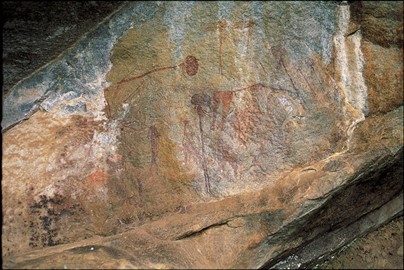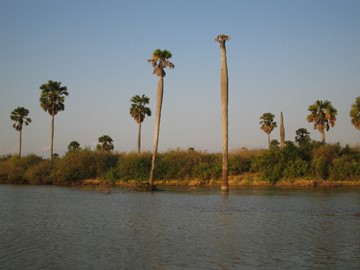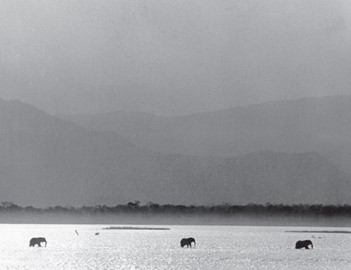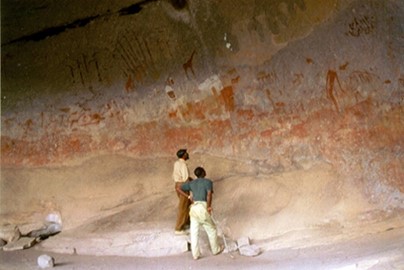region :: africa
Kilimanjaro
Kilimanjaro, a UNESCO World Heritage site in Tanzania, is Africa's highest peak, standing as a dormant volcanic massif with three distinct cones: Kibo, Mawenzi, and Shira. Formed over a million years ago, it supports a unique ecosystem, hosting diverse flora and fauna across its forested slopes and alpine zones. Its cultural significance is tied to local Chagga traditions, and it attracts adventurers worldwide for its challenging yet accessible climb. This iconic landmark exemplifies natural beauty and geol... Read More
Kondoa Rock Art
The Kondoa Rock-Art Sites, a UNESCO World Heritage Site in Tanzania, feature an impressive collection of ancient rock paintings found in natural shelters along the Masai escarpment. Created over millennia by hunter-gatherer and pastoralist communities, the artwork depicts elongated human figures, animals, and scenes of daily life, showcasing a unique streaky style and high artistic value. These sites also hold cultural significance, as some shelters remain part of local rituals, reflecting a living heritage... Read More
Ngorongoro
Ngorongoro, a UNESCO World Heritage site in Tanzania, is a breathtaking natural wonder renowned for its massive volcanic caldera, formed millions of years ago. This unique ecosystem supports a diverse array of wildlife, including the 'Big Five' (lion, leopard, elephant, buffalo, and rhinoceros), making it a prime destination for safari enthusiasts. The site also holds significant archaeological value, with evidence of early human ancestors dating back over three million years, offering a glimpse into our ev... Read More
Selous Game
The Selous Game Reserve, a UNESCO World Heritage site in Tanzania, is renowned for its exceptional biodiversity and pristine wilderness. It hosts a variety of iconic wildlife, including elephants, black rhinos, lions, hippos, and crocodiles, thriving across diverse habitats like miombo woodlands, grasslands, and riverine ecosystems. Designated in 1982, it remains a critical conservation area, largely untouched by human activity, offering a unique glimpse into East Africa’s natural heritage.
Mana Pools
Mana Pools, a UNESCO World Heritage site in Zimbabwe, is renowned for its pristine wilderness and exceptional biodiversity along the Zambezi River. This national park features seasonal floodplains, riverine forests, and iconic baobab trees, supporting a rich ecosystem of wildlife, including elephants, lions, hippos, and rare bird species. Its unique landscape, formed by the river’s meandering channels, offers stunning natural beauty and opportunities for canoe safaris and walking tours. Recognized for its e... Read More
Matobo Hills
The Matobo Hills, a UNESCO World Heritage site in Zimbabwe, is a striking cultural landscape renowned for its dramatic granite rock formations and ancient rock art. Formed over 2 billion years ago, the hills feature unique kopjes and boulders that have sheltered human communities since the Stone Age, leaving behind a rich legacy of paintings dating back 13,000 years. This site also holds deep spiritual significance, tied to the Mwari religion, and showcases a blend of natural beauty and historical importanc... Read More
Ruins of Great Zimbabwe
The Great Zimbabwe National Monument, a UNESCO World Heritage site, is an ancient stone city built between the 11th and 15th centuries by the Shona people. It features impressive dry-stone architecture, including the iconic Great Enclosure and conical tower, reflecting a sophisticated civilization that once thrived as a political and economic hub. The site, abandoned by the 15th century, stands as a testament to African ingenuity and cultural heritage, drawing global interest for its historical significance... Read More
Khami Ruins
The Khami Ruins National Monument, a UNESCO World Heritage Site in Zimbabwe, showcases the remnants of a once-thriving capital of the Torwa dynasty, established after Great Zimbabwe’s decline in the mid-16th century. Renowned for its terraced stone architecture, the site reflects advanced engineering and artistic skill, with discoveries of European and Chinese artifacts highlighting its role as a key trading hub. Designated in 1986, it offers a glimpse into the region’s rich archaeological and cultural hist... Read More







